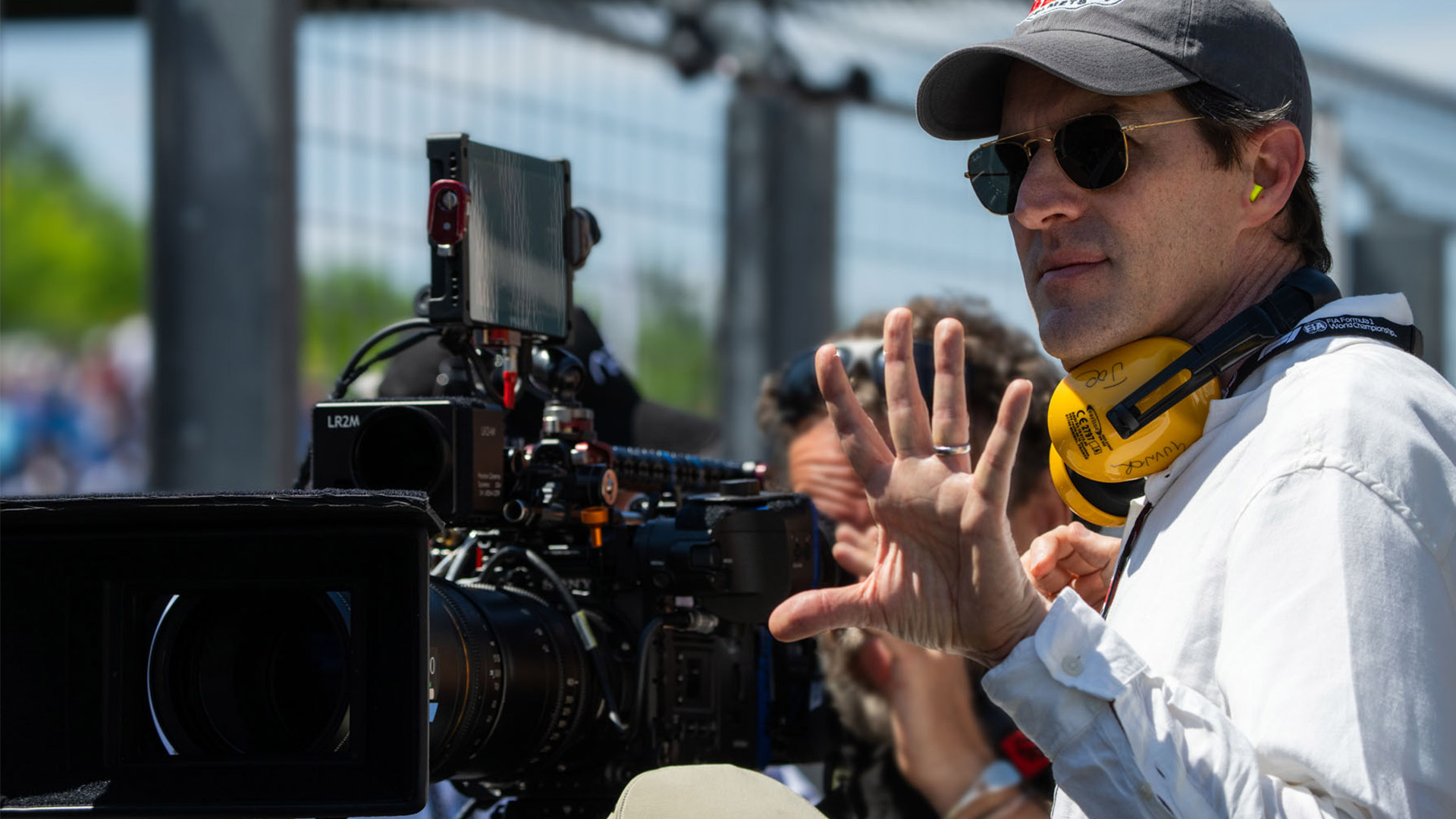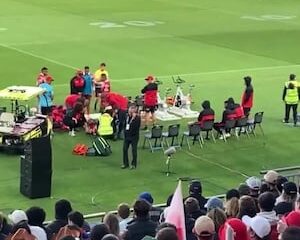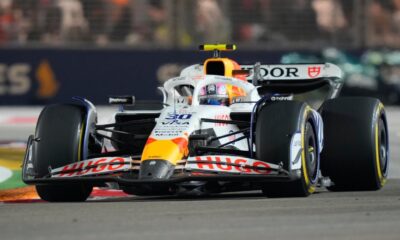Entertainment
Sony’s Custom Cameras Drive Hyper-Realistic Action in F1 Film

The recent Formula 1 film produced by Apple TV and Warner Bros features breathtaking in-car scenes that immerse viewers in the high-speed world of racing. These striking visuals, particularly the close-ups of actors Brad Pitt and Damson Idris gripping the steering wheels, were made possible through innovative camera technology developed by Sony.
Filmmakers faced significant challenges while shooting these scenes, as traditional cinema cameras could not withstand the extreme conditions inside a Formula 1 car. The high speeds, which often exceed 200 mph, combined with intense G-forces and relentless vibrations, required a new approach to capture the action effectively. Cinematographer Claudio Miranda turned to Sony for a solution that would allow them to film in real-time during actual Grand Prix races.
Innovative Camera Solutions for Extreme Conditions
This collaboration between Miranda and director Joseph Kosinski is not their first. The duo previously worked together on Top Gun: Maverick, where they encountered similar filming hurdles. For that project, Sony developed a prototype camera known as the Venice Extension System, which allowed multiple Sony Venice cameras to fit into the cockpits of F/A-18 Super Hornets.
When approached again for the F1 film, Sony’s head of cinema cameras, Nobutatsu Takahashi, and his team set to work on an even more compact solution. They engineered a camera that was essentially just the sensor, allowing it to fit within the tight confines of modified F2 chassis used by Pitt and Idris. Takahashi noted that this process began in January, with the team presenting two prototypes to Miranda; one shorter and one thinner. Ultimately, the shorter design was chosen to fit under the car’s halo structure, leading to the creation of the Rialto Mini.
The project demanded not only a smaller design but also robust engineering to ensure the camera could endure extreme speeds and vibrations. Takahashi stated, “After using them on the F1 movie, they came back with damage from dust and sand, but they still worked perfectly.” This durability was essential for capturing the intense emotions of the drivers while ensuring their safety.
Remote Control and Versatility
One remarkable feature of the new camera setup is its ability to be controlled remotely. With an iPad, operators could manage multiple cameras simultaneously, with setups involving as many as 20 cameras at once. This flexibility allowed the filmmakers to capture a wide range of angles and perspectives during the fast-paced action of the races.
Sony also introduced a new neutral density (ND) system with interchangeable filters tailored for various cinematic visuals. The combination of high-quality image capture and remote operation has made the Rialto Mini a valuable asset for cinematographers. Despite not yet being commercially available, it has already been utilized by numerous Oscar-nominated professionals in various film projects, including works by Steven Spielberg and Larry Sher, who was involved in the film Joker.
The demand for such bespoke camera technology highlights a growing trend in the film industry, where unique visual requirements often necessitate custom solutions. Takahashi remarked on the rarity of requests like those for the F1 film, given their specific hardware, electrical, and software needs.
The collaboration between Sony and filmmakers showcases how innovation can enhance storytelling in cinema, particularly in genres that demand high-performance visual effects. As Takahashi put it, “Working together with creators, filmmakers and cinematographers will make everything happen.” The innovative techniques employed in this F1 film not only push the boundaries of technology but also enrich the viewer’s experience, making the action feel more real and immediate.
-

 Sports2 months ago
Sports2 months agoNetball New Zealand Stands Down Dame Noeline Taurua for Series
-

 Entertainment2 months ago
Entertainment2 months agoTributes Pour In for Lachlan Rofe, Reality Star, Dead at 47
-

 Entertainment4 weeks ago
Entertainment4 weeks agoNew ‘Maverick’ Chaser Joins Beat the Chasers Season Finale
-

 Sports7 days ago
Sports7 days agoEli Katoa Rushed to Hospital After Sideline Incident During Match
-

 Sports2 months ago
Sports2 months agoSilver Ferns Legend Laura Langman Criticizes Team’s Attitude
-

 Politics1 month ago
Politics1 month agoNetball NZ Calls for Respect Amid Dame Taurua’s Standoff
-

 Entertainment2 months ago
Entertainment2 months agoKhloe Kardashian Embraces Innovative Stem Cell Therapy in Mexico
-

 Sports4 days ago
Sports4 days agoJamie Melham Triumphs Over Husband Ben in Melbourne Cup Victory
-

 World3 months ago
World3 months agoPolice Arrest Multiple Individuals During Funeral for Zain Taikato-Fox
-

 Sports3 months ago
Sports3 months agoGaël Monfils Set to Defend ASB Classic Title in January 2026
-

 Entertainment1 month ago
Entertainment1 month agoTyson Fury’s Daughter Venezuela Gets Engaged at Birthday Bash
-

 Sports1 month ago
Sports1 month agoHeather McMahan Steps Down as Ryder Cup Host After Controversy





















